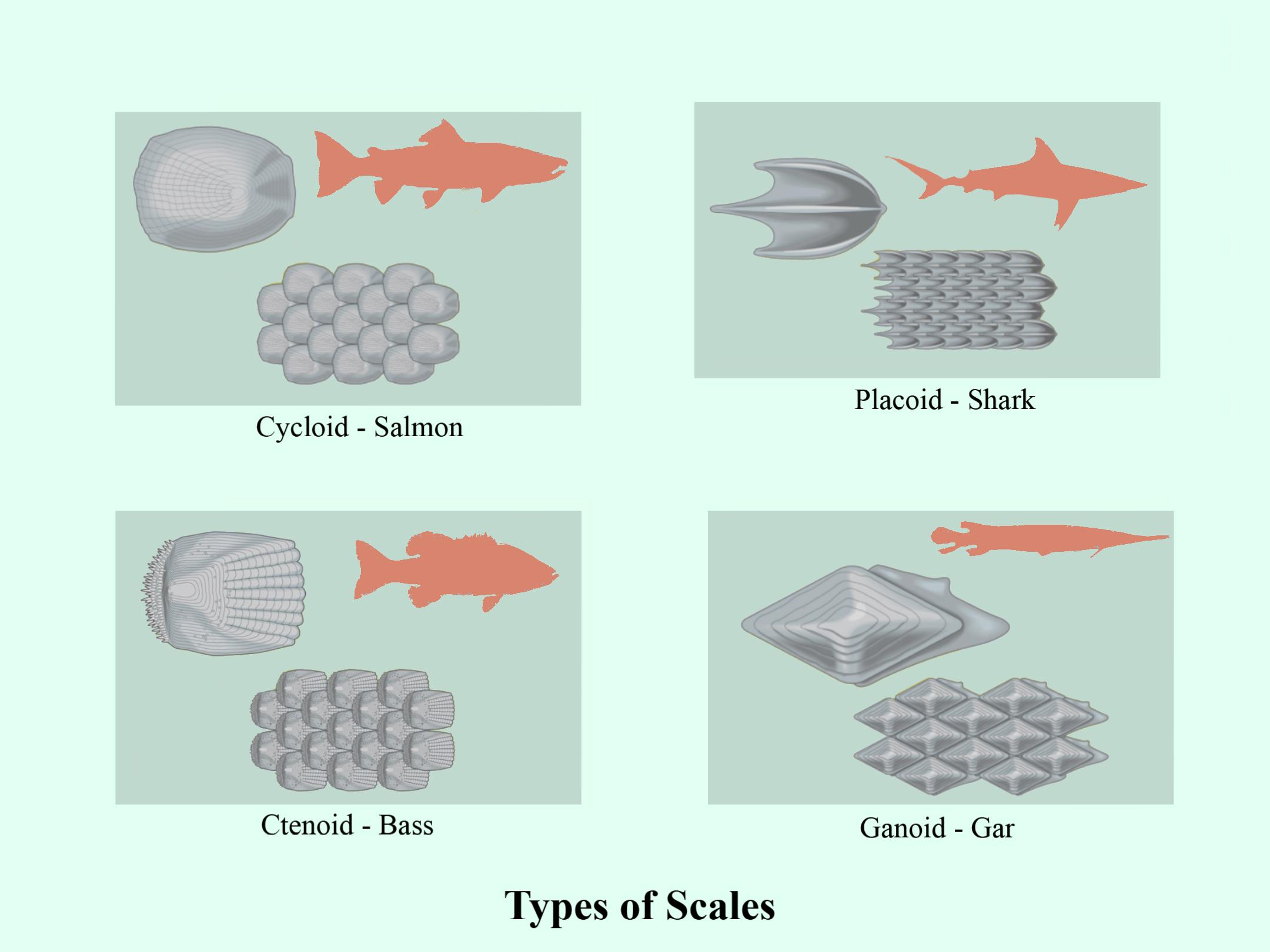
Which type of scales are found on the skin of cartilaginous fishes?
(a)Cycloid
(b)Ctenoid
(c)Gonoid
(d)Placoid
Answer
553.2k+ views
Hint: A small rigid plate that grows out of a fish's skin is a fish scale. These protective scales, which can also provide effective camouflage through the use of reflection and coloration, as well as possible hydrodynamic benefits, cover the skin of most fishes.
Complete answer:
-The size, shape, structure, and extent of the scales vary enormously, ranging from strong and rigid armour plates in fish, such as shrimpfish, to microscopic or absent in fish, such as eels and anglerfish.
-The cycloid scales of salmon and carp, or ctenoid scales of perch, or the ganoid scales of sturgeons, cover most bony fishes.
-Cartilaginous fishes (sharks and rays) are coated with placoid scales.
-Often called dermal denticles, the placoid scales of cartilaginous fishes are structurally homologous to vertebrate teeth.
Additional Information:
-Instead, some animals are covered by scutes, while others on part or all of the skin have no outer coating.
-The scales of bony fish have been proposed to be similar in form to teeth, but they are likely to come from different origins.
-Most fish are often coated in a film of mucus or slime that can defend against pathogens such as bacteria, fungi, and viruses and minimize surface resistance when fish swim.
-Fish scales are part of the integumentary system of fish and are developed from the dermis mesoderm layer, which distinguishes them from reptile scales.
-The same genes that are involved in mammalian tooth and hair growth are also involved in the development of scales.

So, the correct answer is ‘Placoid’.
Note:
-It is possible to use the morphology of a scale to identify the fish species.
-The word scale is derived from "escale" from the Old French, meaning a shell pod or husk.
Complete answer:
-The size, shape, structure, and extent of the scales vary enormously, ranging from strong and rigid armour plates in fish, such as shrimpfish, to microscopic or absent in fish, such as eels and anglerfish.
-The cycloid scales of salmon and carp, or ctenoid scales of perch, or the ganoid scales of sturgeons, cover most bony fishes.
-Cartilaginous fishes (sharks and rays) are coated with placoid scales.
-Often called dermal denticles, the placoid scales of cartilaginous fishes are structurally homologous to vertebrate teeth.
Additional Information:
-Instead, some animals are covered by scutes, while others on part or all of the skin have no outer coating.
-The scales of bony fish have been proposed to be similar in form to teeth, but they are likely to come from different origins.
-Most fish are often coated in a film of mucus or slime that can defend against pathogens such as bacteria, fungi, and viruses and minimize surface resistance when fish swim.
-Fish scales are part of the integumentary system of fish and are developed from the dermis mesoderm layer, which distinguishes them from reptile scales.
-The same genes that are involved in mammalian tooth and hair growth are also involved in the development of scales.

So, the correct answer is ‘Placoid’.
Note:
-It is possible to use the morphology of a scale to identify the fish species.
-The word scale is derived from "escale" from the Old French, meaning a shell pod or husk.
Recently Updated Pages
Master Class 12 Business Studies: Engaging Questions & Answers for Success

Master Class 12 Economics: Engaging Questions & Answers for Success

Master Class 12 English: Engaging Questions & Answers for Success

Master Class 12 Maths: Engaging Questions & Answers for Success

Master Class 12 Social Science: Engaging Questions & Answers for Success

Master Class 12 Chemistry: Engaging Questions & Answers for Success

Trending doubts
What is meant by exothermic and endothermic reactions class 11 chemistry CBSE

Which animal has three hearts class 11 biology CBSE

10 examples of friction in our daily life

One Metric ton is equal to kg A 10000 B 1000 C 100 class 11 physics CBSE

1 Quintal is equal to a 110 kg b 10 kg c 100kg d 1000 class 11 physics CBSE

Difference Between Prokaryotic Cells and Eukaryotic Cells




